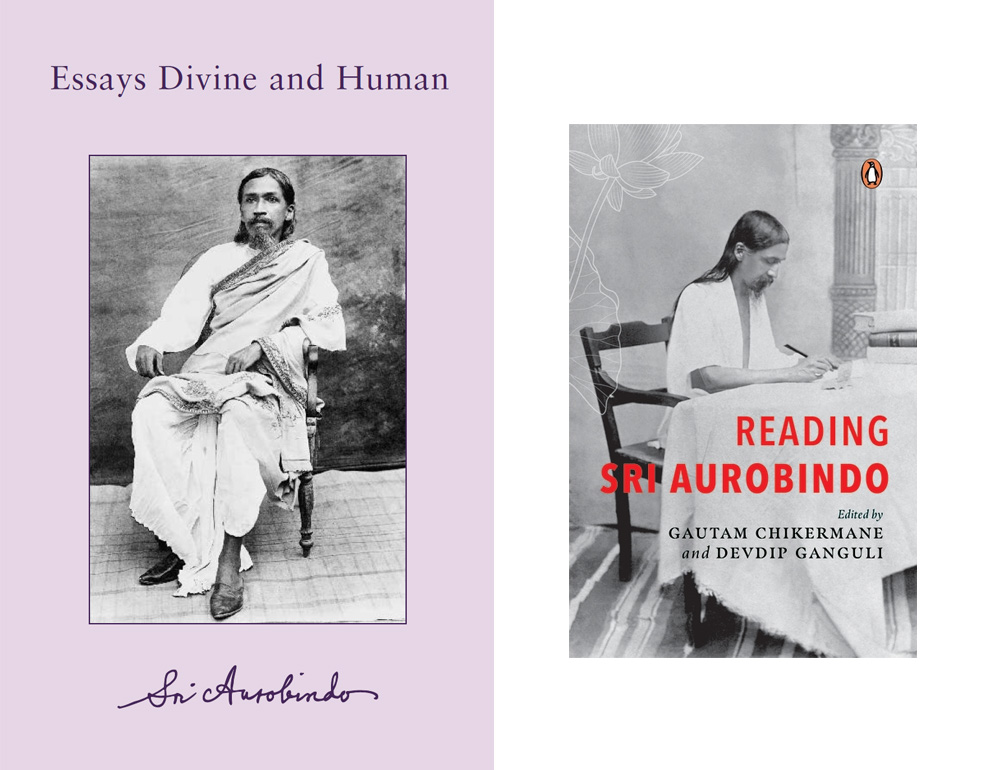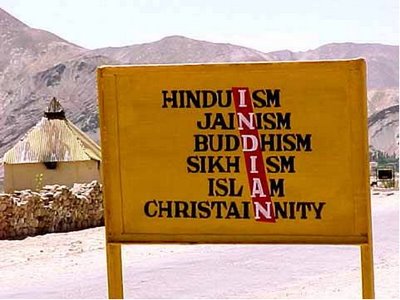It is hard to study a subject as war, without considering the nature of violence; and harder still to deal with the subject of violence without giving sufficient attention to its opposite – the idea of non-violence. Non-violence in its original form – Ahimsa, was never a political ideology, or a way of dealing with warring groups. Nor was the original Ahimsa a value and belief system that abhorred war because war inherently violent. It was Gandhi who popularized a new flavor to the word and people the world over associate non-violence with Gandhi.
His words and actions have left a tremendous imprint upon the aspiring pacifists of our modern age. I am thus naturally drawn to study Gandhi on this important subject of non-violence, which he vehemently espoused and stood for. There are many dimensions to Gandhi’s work, and I have chosen only to focus on this one aspect of his insistence, season and out, on Ahimsa. This, I see as being particularly relevant, as many have taken to Gandhi’s character as being Indian, his actions an exemplification of the true Indian nature. Nothing could be further from the truth.
A man is truly a man, in Gandhi’s view, when he restrains himself and not when he retaliates. We must fight without rancour and without staining our hands with brute force. Every injustice has to be combated but unto one’s own death, never unto the death of one’s opponent. Blood must be spilled for a noble cause, but it must be our own blood.
“The idealisation of non-violence at all costs serves also to throw into relief the precise meaning of Gandhi’s saying: “Politics are to me subservient to religion.” If religion primarily signified to him non-violence, then it is doubtful whether he can stand wholly as a representative of what India has historically understood by religion. In the golden age of Indian spirituality, the Vedic times, the arts of war were not taboo. Even in the Ashrams of the Rishis archery was taught -surely not just to hunt animals (though that too would be contrary to non-violence). It was taught essentially in order to fit men for violence in a right cause. The emphasis was always on being right, not on being non-violent. The holiest figures in Indian tradition, Rama and Krishna, were mighty warriors and urged men to battle against the enemies of dharma. Even Buddha who among India’s spiritual personalities put the greatest premium on non-violence did not enjoin it on all and sundry: he restricted it to the class of monks and while conjuring humanity to return love for hatred, never discouraged violence in defence of a cause that was just. The absolute adherence to ahimsa was derived by Gandhi from Tolstoy: it does not reflect the flexible and many-sided spiritual wisdom of original Hinduism.”
This is a crucial aspect of Amal Kiran’s commentary, and few other thinkers have said it as clearly as he has. To ascribe Gandhi’s position on Ahimsa as being ‘Indian’, or equally poor – being dharmic, is an utter falsity. I would gladly give him all the credit in the world for having an wavering conviction of his belief(s), but I must admit simultaneously that they were woefully wrong to begin with.
Since we’re on this topic of Ahimsa, I’d like to include a few short extracts of some conversations from the 1920s – almost a century ago, but I believe to be relevant in our current times :
A disciple: Gandhi’s position is that he does not care to remove violence from others; he wants to observe non-violence himself.
Sri Aurobindo: That is one of the violences of the Satyagrahi that he does not care for the pressure which he brings on others. It is not non-violence. It is not Ahimsa. True Ahimsa is a state of mind and does not consist in physical or external action or in avoidance of action. Any pres sure in the inner being is a breach of Ahimsa.
The one thing that Gandhi is known for, and embodies, is not Ahimsa at all, but an intellectual rigid and unstable mental construct.
Sri Aurobindo: When the Europeans say that he is more Christian than many Christians (some even say that he is “Christ of the modern times”) they are perfectly right. All his preaching is derived from Christianity, and though the garb is Indian the essential spirit is Christian. He may not be Christ, but at any rate he comes in continuation of the same impulsion. He is largely influenced by Tolstoy, the Bible, and has a strong Jain tinge in his teachings; at any rate more than by the Indian scriptures the Upanishads or the Gita which he interprets in the light of his own ideas.
A disciple: Many educated Indians consider him a spiritual man.
Sri Aurobindo: Yes, because the Europeans call him spiritual. But what he preaches is not Indian spirituality but something derived from Russian Christianity, non-violence, suffering, etc. …
A disciple: Gandhi writes that non-violence tried by some people in Germany has failed because it has not been so strong as to generate sufficient heat to melt Hitler’s heart.
Sri Aurobindo: I am afraid it would require quite a furnace!… The trouble with Gandhi is that he had to deal only with Englishmen, and the English want to have their conscience at ease. Besides, the Englishman wants to satisfy his self-esteem and wants world-esteem. But if Gandhi had had to deal with the Russians or the German Nazis, they would have long ago put him out of their way.
May 5, 1940
A disciple: If Hitler invades India, Gandhi will declare we are all non-violent.
Sri Aurobindo: Hitler will be delighted at it.
A disciple: Yes, he will sweep off everybody with machine guns. Gandhi believes he can be converted.
Sri Aurobindo: It is a beautiful idea, but not credible. Does anybody really believe in his non-violence?… Will he face an army with his charkha?
A disciple: ..he still believes that by non-violence we can defend our country.
Sri Aurobindo: Non-violence can’t defend. One can only die by it.
Here is an excerpt from an open letter which Gandhi addressed to the British in 1940 :
“I appeal for cessation of hostilities … because war is bad in essence. You want to kill Nazism. Your soldiers are doing the same work of destruction as the Germans. The only difference is that perhaps yours are not as thorough as the Germans … I venture to present you with a nobler and a braver way, worthy of the bravest soldiers. I want you to fight Nazism without arms or … with non-violent arms. I would like you to lay down the arms you have as being useless for saving you or humanity…. Invite Herr Hitler and Signor Mussolini to take what they want of the countries you call your possessions. Let them take possession of your beautiful island with your many beautiful buildings. You will give all these but not your souls nor your minds. If these gentlemen choose to occupy your homes, you will vacate them. If they do not give you free passage out, you will allow yourselves man, woman and child, to be slaughtered, but you will refuse to owe allegiance to them”
(Amrita Bazar Patrika, July 4, 1940, Method of Non-violence, Gandhi’s appeal to every Briton.
To most right-thinking individuals, the above “sage advice” would come across as abject lunacy. The really make one wonder how he ended up receiving the Mahatma-prefix.
Ahimsa : making dangerous generalizations
“If ahimsa signifies, as Gandhi would have it, repugnance from shedding all blood except one’s own even when one is confronted with Hitler’s panzers or, to take a smaller yet sufficiently vicious example, the marauding tribesmen who with Pakistan’s connivance broke into Kashmir, then ahimsa is just an unconscious collaboration with anti-civilisation forces and, far from being a merit, a pernicious mistake. To refuse to see in some collectivities of human beings on certain occasions of history a streak of the diabolic which cannot be mended but requires to be ended by physical attack is sheer blindness to facts.”
The right context and sense of Pacifism
“Even in the absence of the markedly diabolic, we should be able to see the element of the infra-rational as quite likely at several times to need violent opposition on our part. Ahimsa, leading to an apologetic attitude towards our armed forces as if in keeping up the martial spirit we were defaulting from the ideal of the divine that India has always visioned, is an utter falsity. If the pacifists in India and abroad consider the avoidance of war by all means and the pedestalling of ahimsa at all costs to be the essence of their philosophy and their work, they are on a wrong track and, for all their good intentions, doing disservice to the world. Identify “goodwill in action” with extreme ahimsa and you immediately disqualify it from being a worthy pursuit. What we have to pursue is noble effort to avoid war for selfish motives with their brood of hatred and greed: this is the only valid sense of pacifism in the context of international politics.”
:
“We are no warmongers for war‘s own cruel delight or for petty interests. Nor do we believe that war is the only remedy for the forces ranged against righteousness. And surely we are not so short-sighted as to overlook the extraordinarily horrible shape war is bound to take in the modem world… No sane person can wish for war if by any means short of selling one’s Godward soul it can be averted.”
“The cry of Sri Krishna at the battle of Kurukshetra, “Fight and win a mighty kingdom” is too clear to be allegorised away, too insistent in one form or another down the ages, especially at their turning-points, to be drowned by any mellifluous sentimentalism. So we must stop contrasting peace to war: under particular circumstances war cannot help having justification, and not only defensive but also offensive war, since frequently the best method of defence is attack. A squeamish recoil from physical combat and destruction has no basis in the divine reality’s method and movement vis-a-vis an evolving world in which truth and falsehood, right and wrong, beauty and ugliness are pitted against each other. Of course, every effort must be made to avoid such combat and destruction, compromise should go as far as is consistent with essential loyalty to the cause of civilisation, no mere convenience or superficial advantage should be cherished inordinately, yet a final resort to arms must not be looked upon as an evil.”
Related Links
II The elimination and passing of war?
III Heraclitus and Nietzsche on war, and the Upanishadic view



